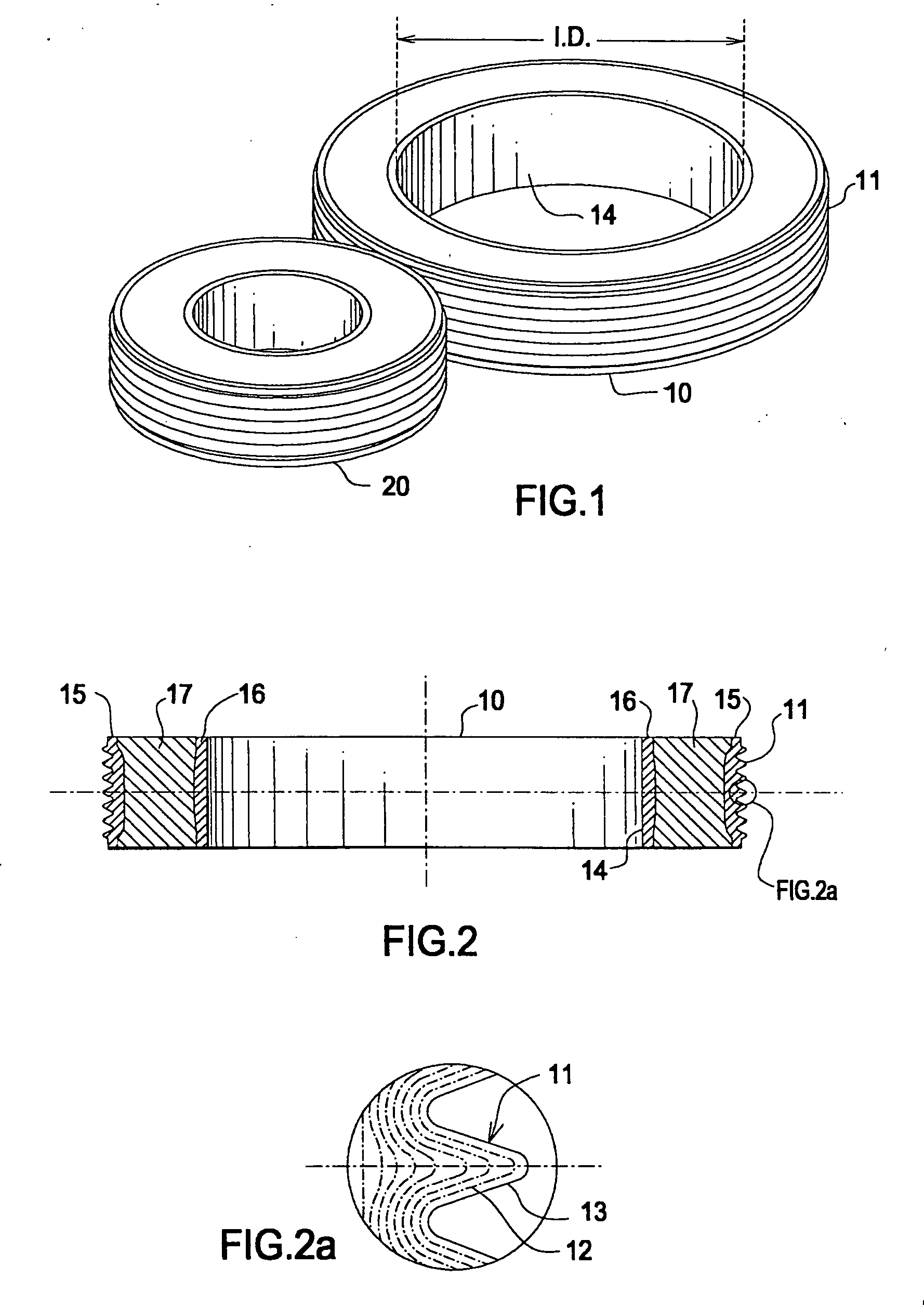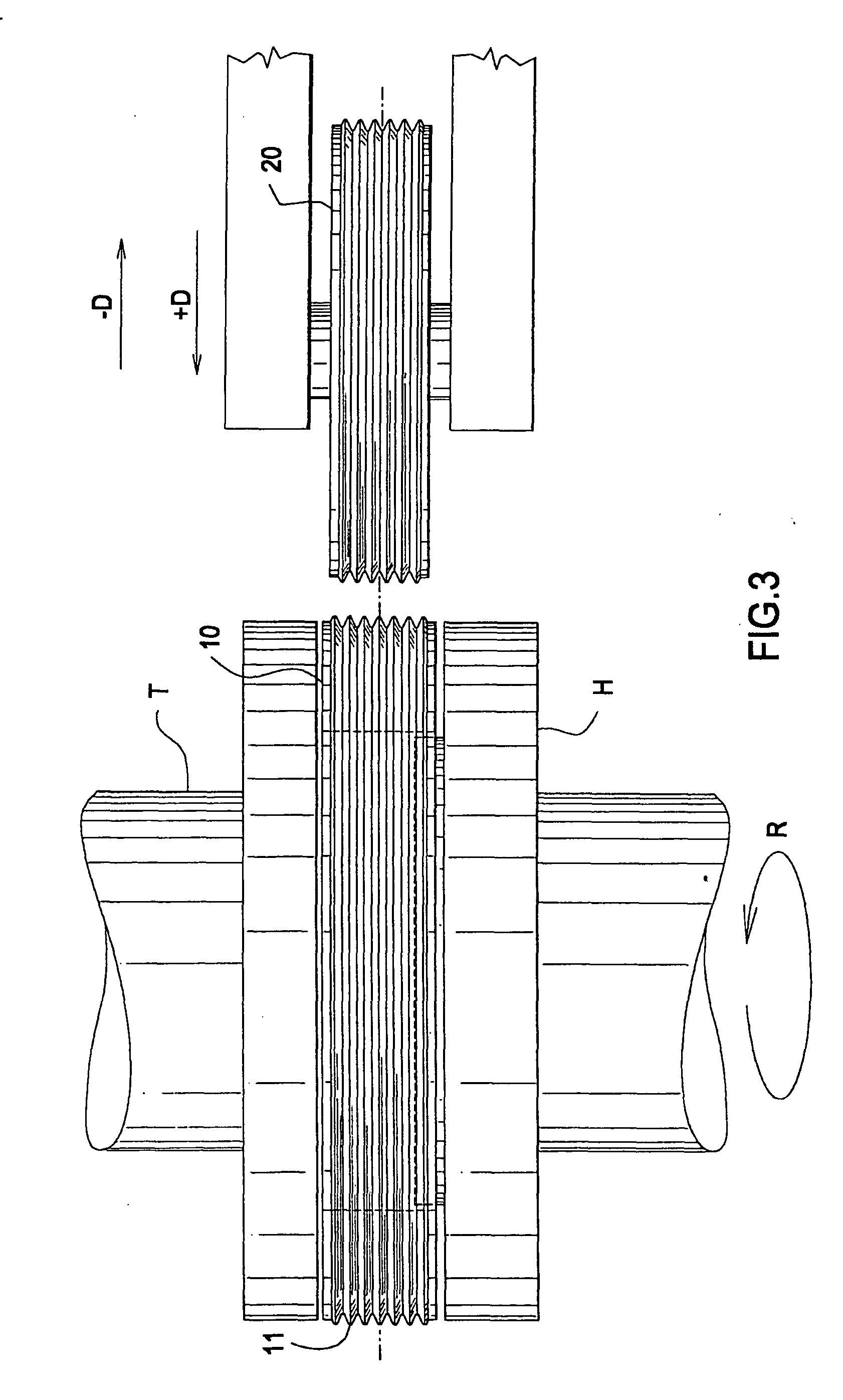Method of flow forming a metal part
a metal part and flow forming technology, applied in mechanical equipment, transportation and packaging, hoisting equipment, etc., can solve the problems of metal process, reduced strength of parts, and inability to compact powder metal to 100% density of material, and achieve the effect of eliminating powder metal porosities and great accuracy
- Summary
- Abstract
- Description
- Claims
- Application Information
AI Technical Summary
Benefits of technology
Problems solved by technology
Method used
Image
Examples
Embodiment Construction
[0026] Powder metal (PM) is a known method of manufacturing ferrous and nonferrous parts. First, elemental or alloy powders are mixed and compacted in a die. The resultant shapes are then sintered or heated in a controlled-atmosphere furnace to metallurgically bond the particles. PM is generally a low waste metalworking process, typically using more than 97% of the starting raw material in the finished part. As a result PM is an energy and materials conserving process. Although PM is capable of producing parts to final dimensions, some finish machining is usually required to bring a part to a final high accuracy.
[0027] The first step of the inventive process is forming a round disk by conventional powder metal process. The disk can be a donut shaped part with or without a flange on one side of its outer diameter, see FIG. 1. Although flanges can be made on both sides of the outer diameter of the blank, it is a more difficult process in powder metal, requiring a cam action in the di...
PUM
| Property | Measurement | Unit |
|---|---|---|
| temperature | aaaaa | aaaaa |
| thickness | aaaaa | aaaaa |
| thickness | aaaaa | aaaaa |
Abstract
Description
Claims
Application Information
 Login to View More
Login to View More - R&D
- Intellectual Property
- Life Sciences
- Materials
- Tech Scout
- Unparalleled Data Quality
- Higher Quality Content
- 60% Fewer Hallucinations
Browse by: Latest US Patents, China's latest patents, Technical Efficacy Thesaurus, Application Domain, Technology Topic, Popular Technical Reports.
© 2025 PatSnap. All rights reserved.Legal|Privacy policy|Modern Slavery Act Transparency Statement|Sitemap|About US| Contact US: help@patsnap.com



